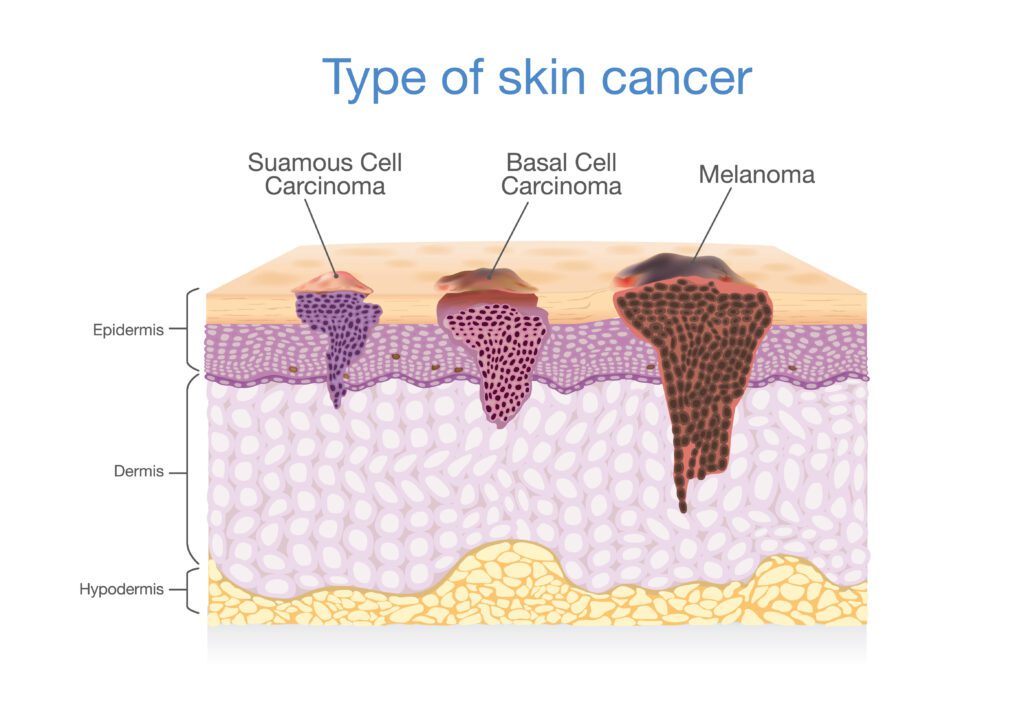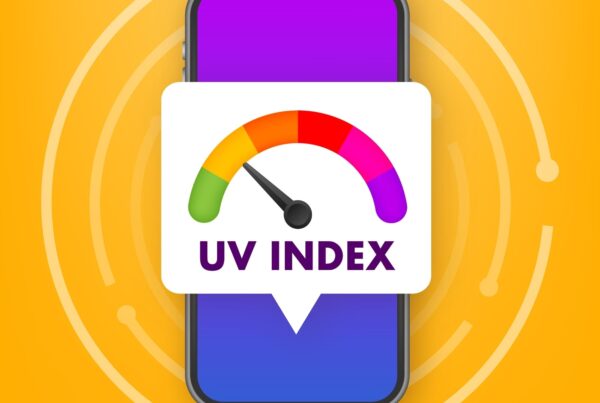Mohs surgery is the leading skin cancer treatment for basal cell carcinomas (BCCs) and squamous cell carcinomas (SCCs). If you, a friend, or a loved one has skin cancer, Mohs surgery could be a promising treatment.
In this blog, we’ll discuss the benefits of Mohs surgery, how the procedure works, and who should consider it.
Mohs Surgery 101

Mohs surgery, or Mohs micrographic surgery, is the brainchild of Frederic Mohs. The surgeon developed the technique in the late 1930s. In the 1960s, another doctor adapted the procedure and introduced it to the fellowship program at NYU, where it became the procedure it is today.
Unlike other skin cancer treatments, Mohs surgery occurs in stages while the patient waits.
This process allows the dermatologist to remove all cancerous cells in an area. It also provides the highest cure rate for the targeted cancers. Because Mohs surgery is minimally invasive, it spares healthy tissue and leaves as small a scar as possible.
Here’s a quick breakdown of how Mohs surgery works:
- The procedure takes place in an outpatient setting.
- The surgeon applies a local anesthetic that numbs the area. Once the area is numb, the surgeon uses a scalpel to remove thin layers of skin.
- As the surgeon removes the skin, they mark the skin samples with colored dyes. This creates a map of the surgical area. This also helps the surgeon identify where cancerous cells still exist.
- As the surgeon removes layers of skin, they freeze the specimens and slice them into thin sections. The surgeon then processes the sections on glass slides.
- The surgeon examines the slides under a microscope. This allows the surgeon to assess the extent of the cancer and also ensure no cancerous cells are left at the margins.
- This procedure continues until the area is cancer-free.
- Some clients undergo reconstructive surgery immediately after the removal of the skin cancer.
Who Should Have Mohs Surgery?

Mohs surgery is an effective treatment for basal cell carcinomas or squamous cell carcinomas, both of which are considered high-risk cancers.
In some cases, Mohs surgery can also treat certain kinds of melanoma.
Generally, Mohs surgery is ideal for cancers that are aggressive, large, or growing quickly. It’s also effective against recurrent cancers and cancers that have indistinct edges.
Since Mohs surgery is minimally invasive, it’s also ideal for cancers in delicate areas, like the eyes, nose, lips, ears, scalp, fingers, toes, or near the genitals.
What to Expect During and After Surgery
During Surgery:

- Anesthesia. Mohs surgery occurs in an outpatient setting. Before the surgery begins, the surgeon will use anesthesia to numb the treatment area.
- Tissue Removal. Next, the surgeon uses a scalpel to remove the tumor and a thin layer of surrounding tissue.
- Lab Processing: To map the tissue, the surgeon uses the Mohs technique to examine the samples under a microscope. The surgeon will repeat this process until no more cancer cells are present.
- Reconstruction: Once the cancer is gone, the surgeon will close the wound. Depending on the size and location, this may involve sutures or more complex reconstructive techniques.
After Surgery:
- Monitoring: After the surgery, the surgeon and team will monitor the patient for a brief period to make sure there are no follow-up complications.
- Follow-up Care: Follow-up care usually includes keeping the wound clean, avoiding certain activities, and taking prescribed medications.
- Pathology Report: The surgical team will generate a detailed pathology report after the surgery. This report will outline the extent of the cancer removal. It will also detail the presence or absence of cancer cells in the margins.
- Long-term Follow-up: Once the surgery is over, the surgeon monitors for any signs of recurrence or other skin issues.
Why Choose a Fellowship-Trained Surgeon for Your Mohs Surgery?

If you’re considering undergoing Mohs surgery, finding a highly trained professional is critical.
At Dermatology Associates, we’re proud to have Dr. Sampson as our on-staff Mohs surgeon.
In fact, Dr. Sampson is a fellowship-trained micrographic surgeon.
Mohs fellowship training is important because only fellowship-trained surgeons have completed the additional training required by the accredited American College of Mohs Surgery (ACMS) program.
Here are a few benefits of working with a fellowship-trained surgeon like Dr. Sampson:
- Experience and Excellence: Fellowship-trained Mohs surgeons must complete a minimum of 500 proctored cases under the supervision of an attending surgeon. For comparison, those without fellowship training (called society-based Mohs surgeons) only need to complete 75 cases. Additionally, ACMS-accredited fellowships are incredibly competitive, which means that surgeons with this training have demonstrated excellence and established themselves as some of the most skilled surgeons in the field.
- Capability with complex procedures: Mohs surgeons must complete more supervised cases to achieve a fellowship designation. As they work through these cases, they gain hands-on experience with complex procedures, which means you get the peace of mind that comes with knowing your surgeon is as technically skilled as possible.
- Cosmetic results: Mohs micrographic surgery is a highly precise procedure usually performed in sensitive areas like the face, where cosmetic results are crucial. Fortunately, surgeons with fellowship training have the expertise and experience to minimize scarring and ensure the procedure is as minimally invasive as possible.
- Preparation for recurrence: While Mohs surgery is a highly effective skin cancer treatment, some cancers recur. If this happens, working with a fellowship-trained Mohs surgeon is an excellent choice. While fellowship-trained surgeons are experts in complicated surgical techniques, they’re also highly skilled at analyzing tissue samples, monitoring for atypical cells, and aggressively combating recurrence.
Considering Mohs Surgery? Dermatology Associates is Here for You
If you or a loved one is considering undergoing Mohs surgery, Dermatology Associates is proud to offer services with our fellowship-trained micrographic surgeon, Dr. Blake Sampson.
Contact us today to learn more about our skincare and cancer treatment options or how our dermatology experts can help you determine your next step.






